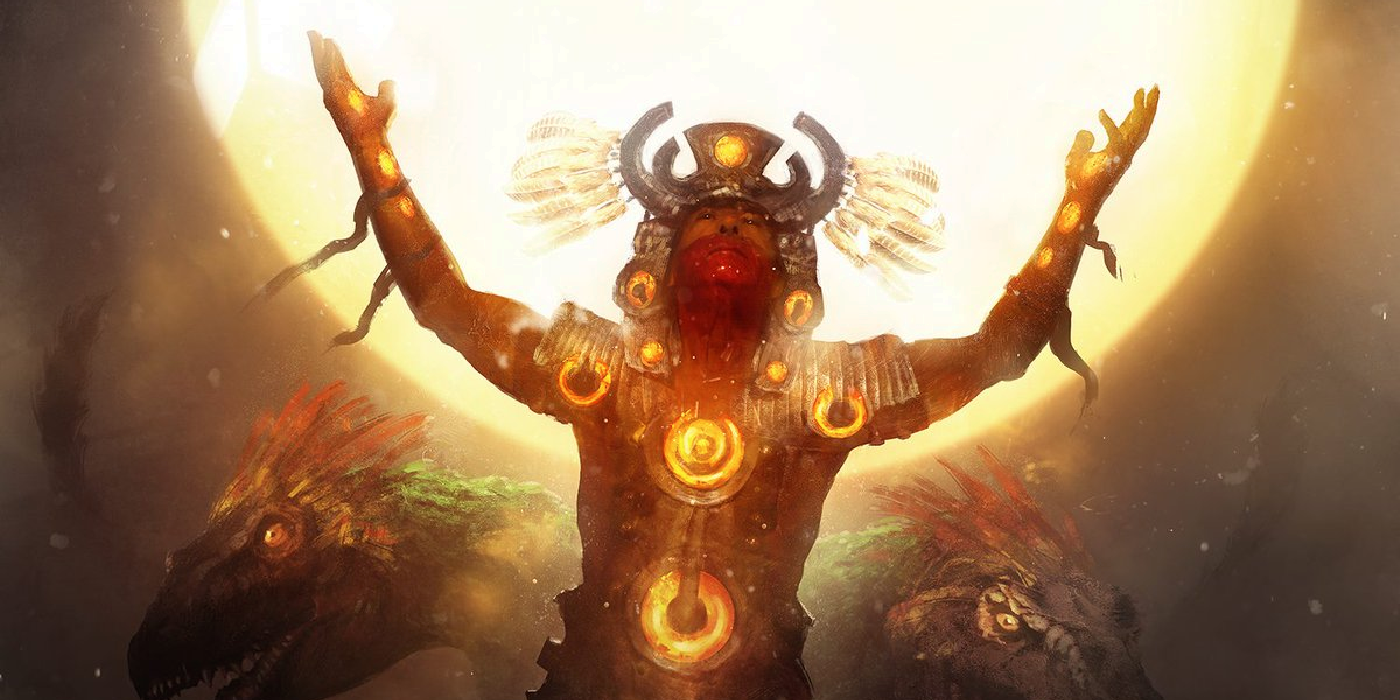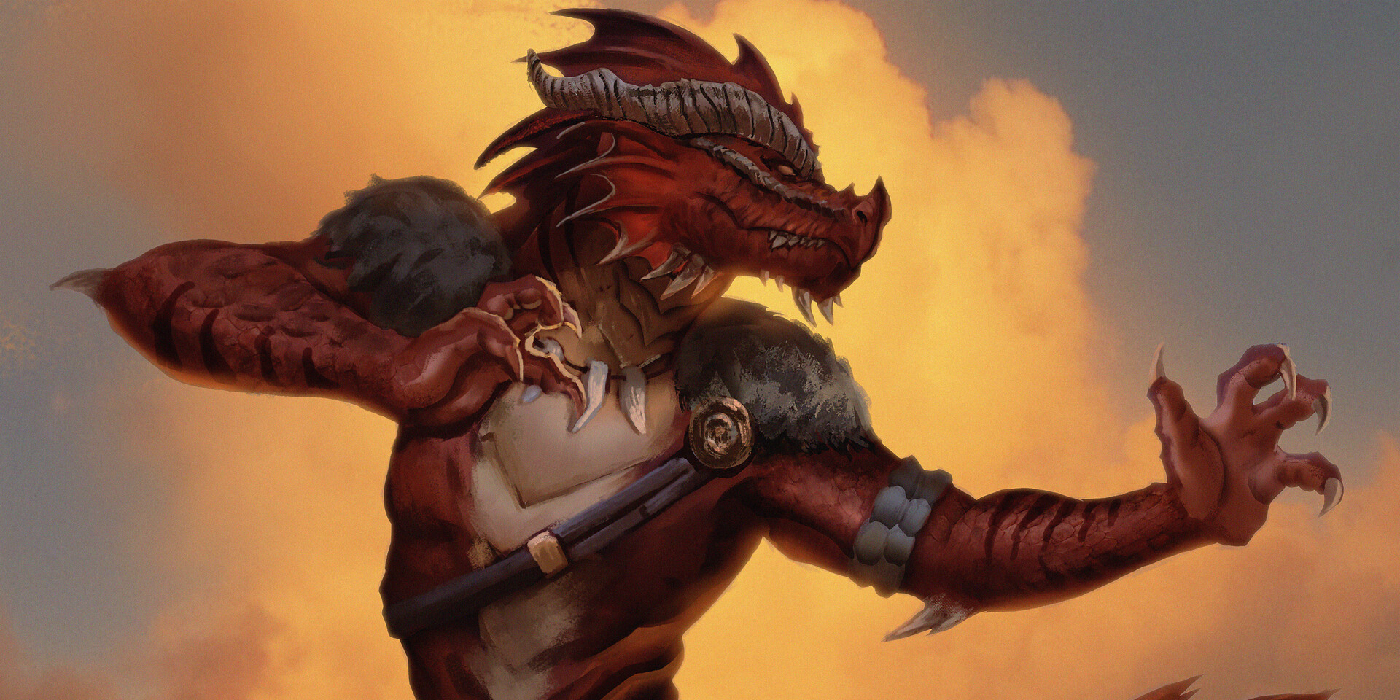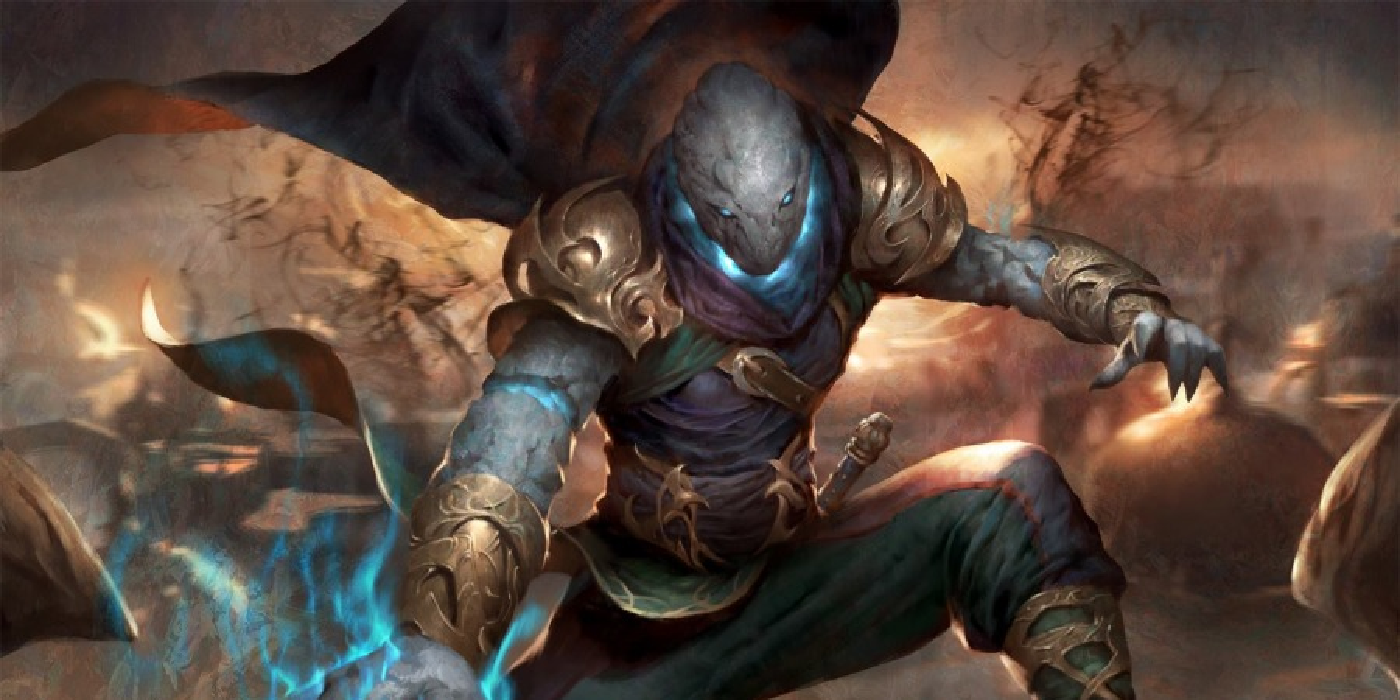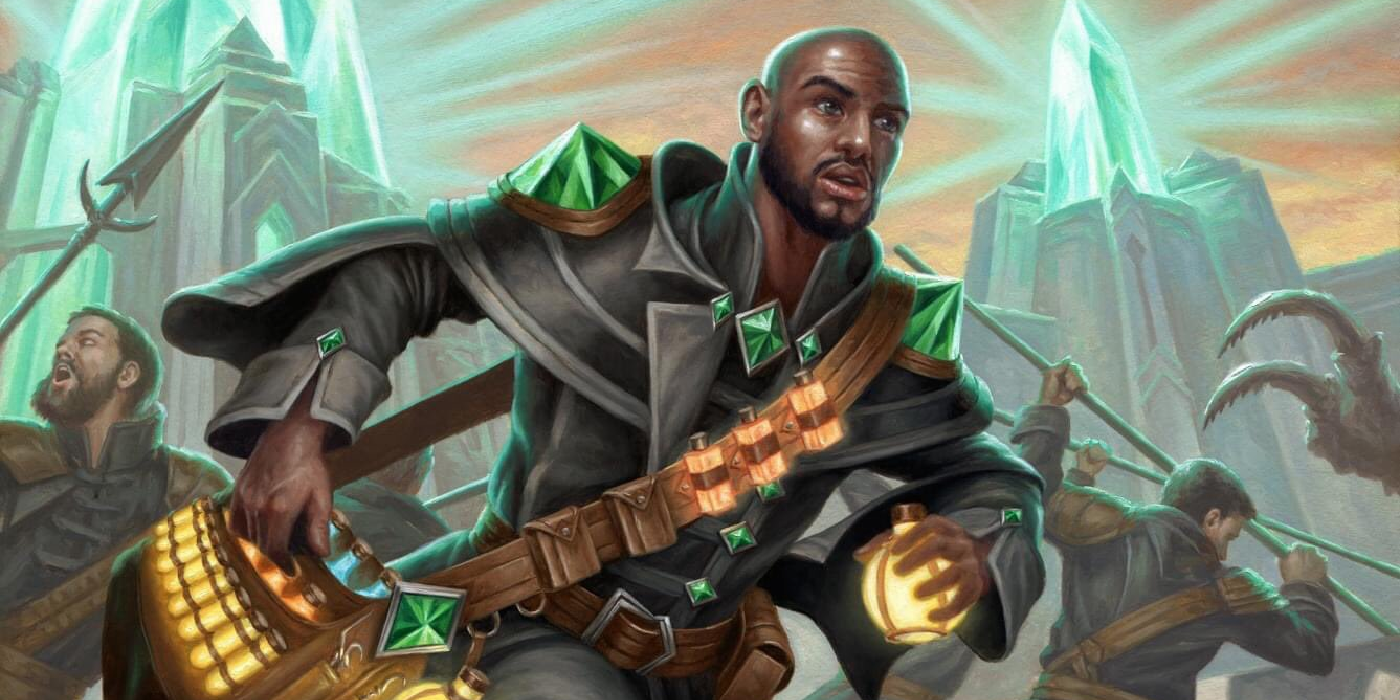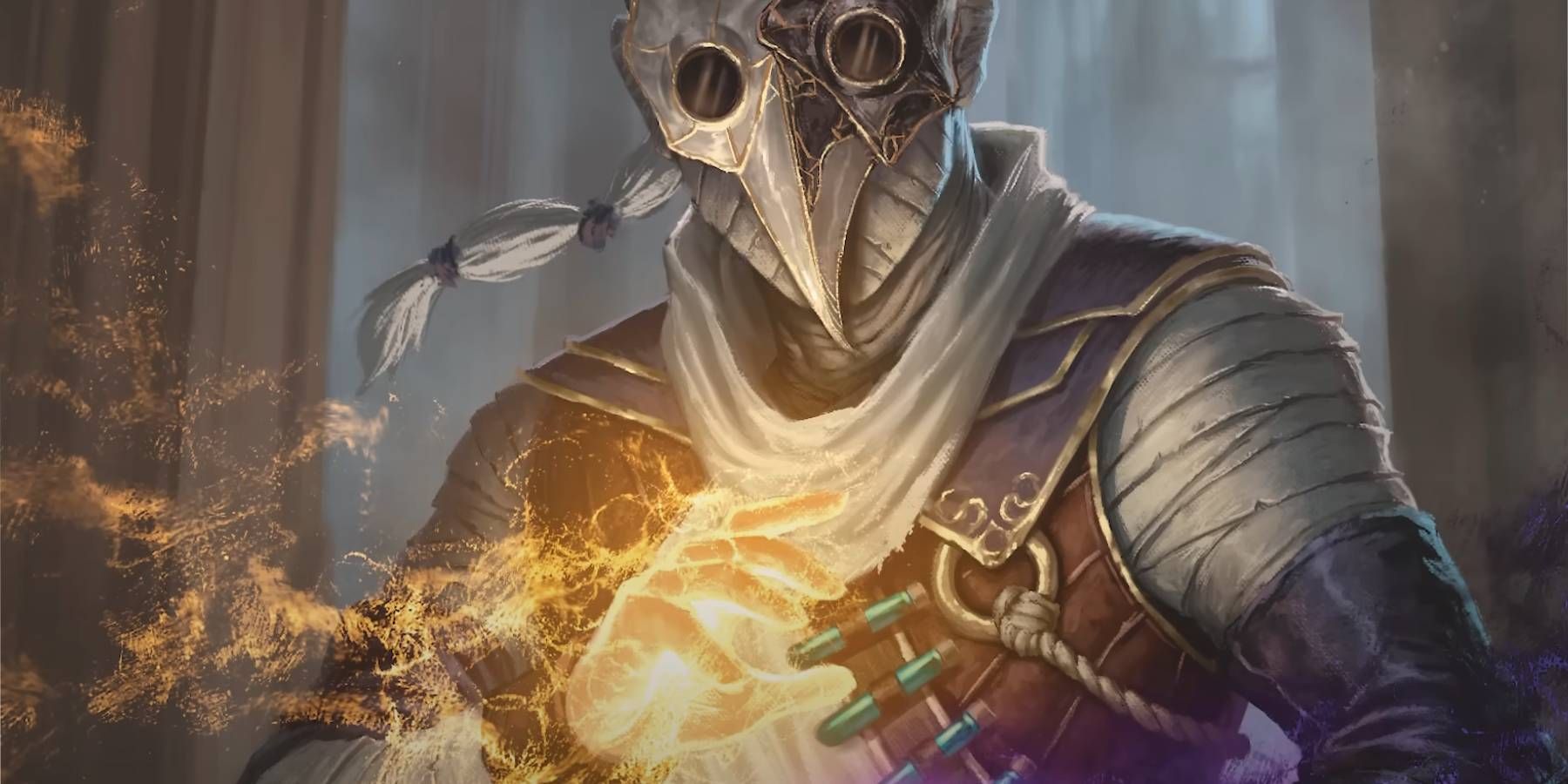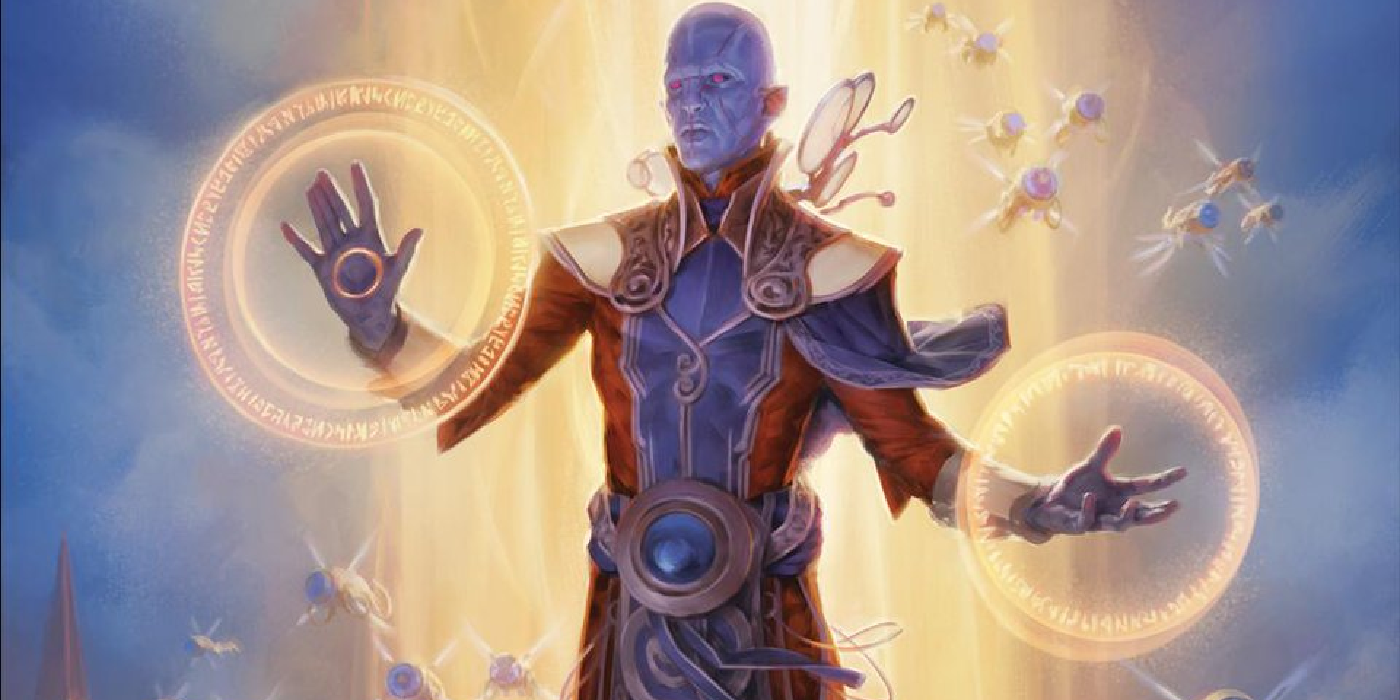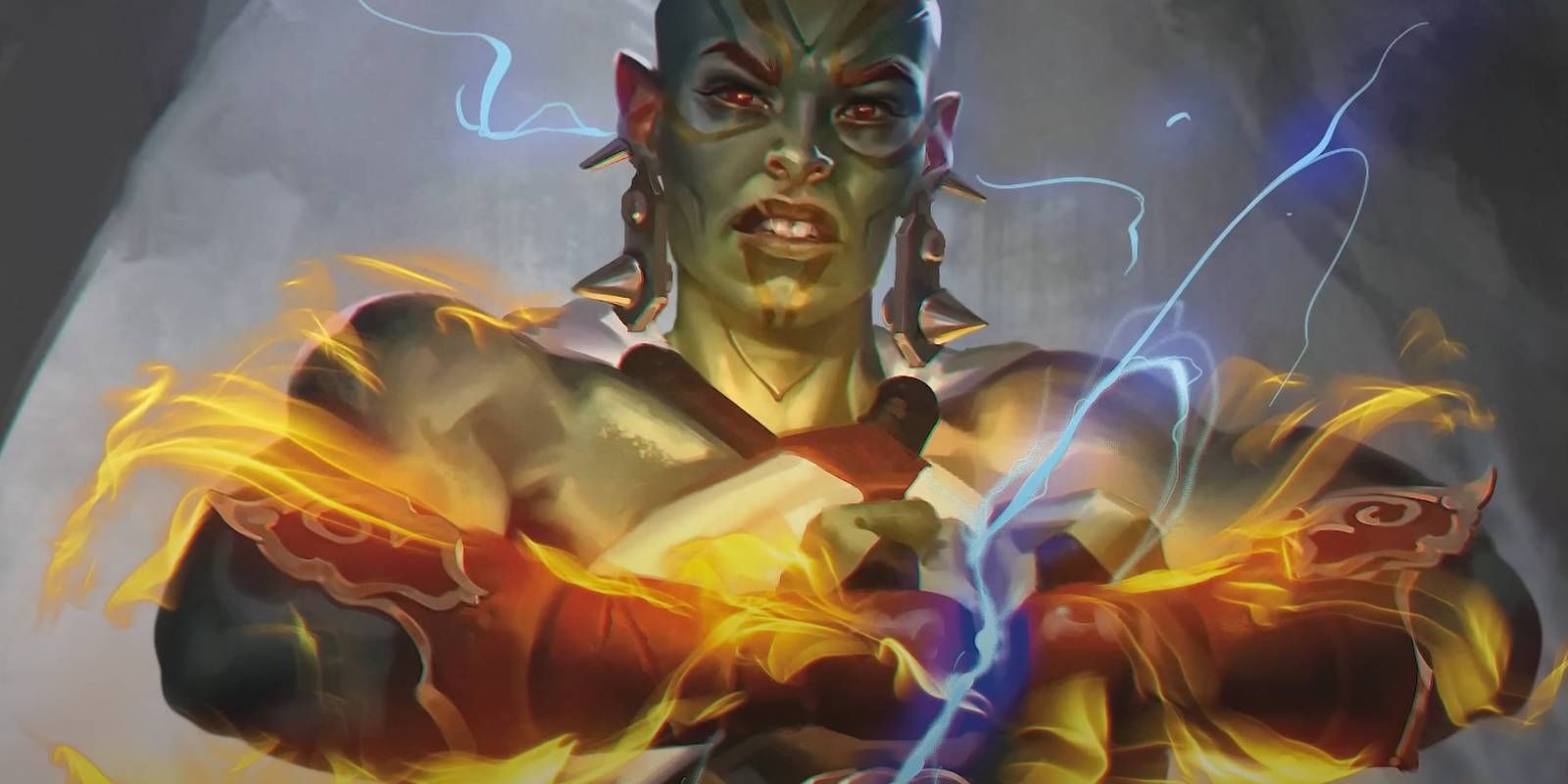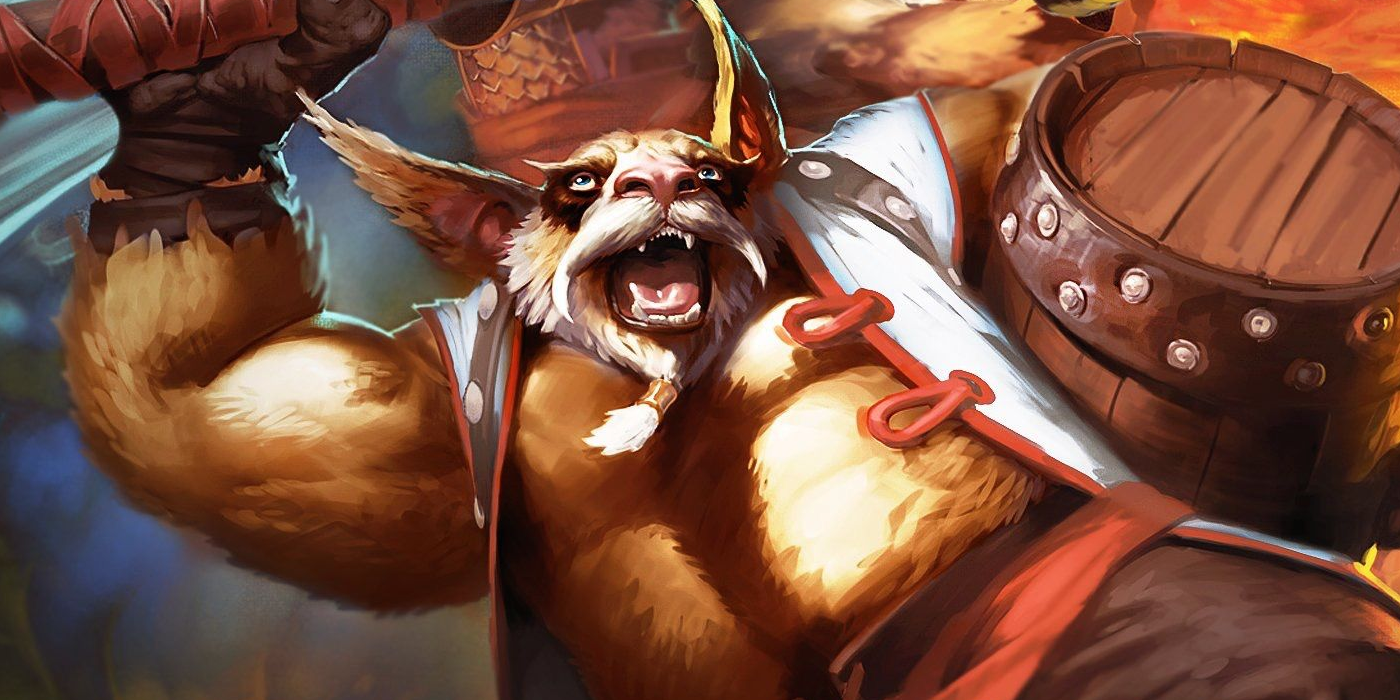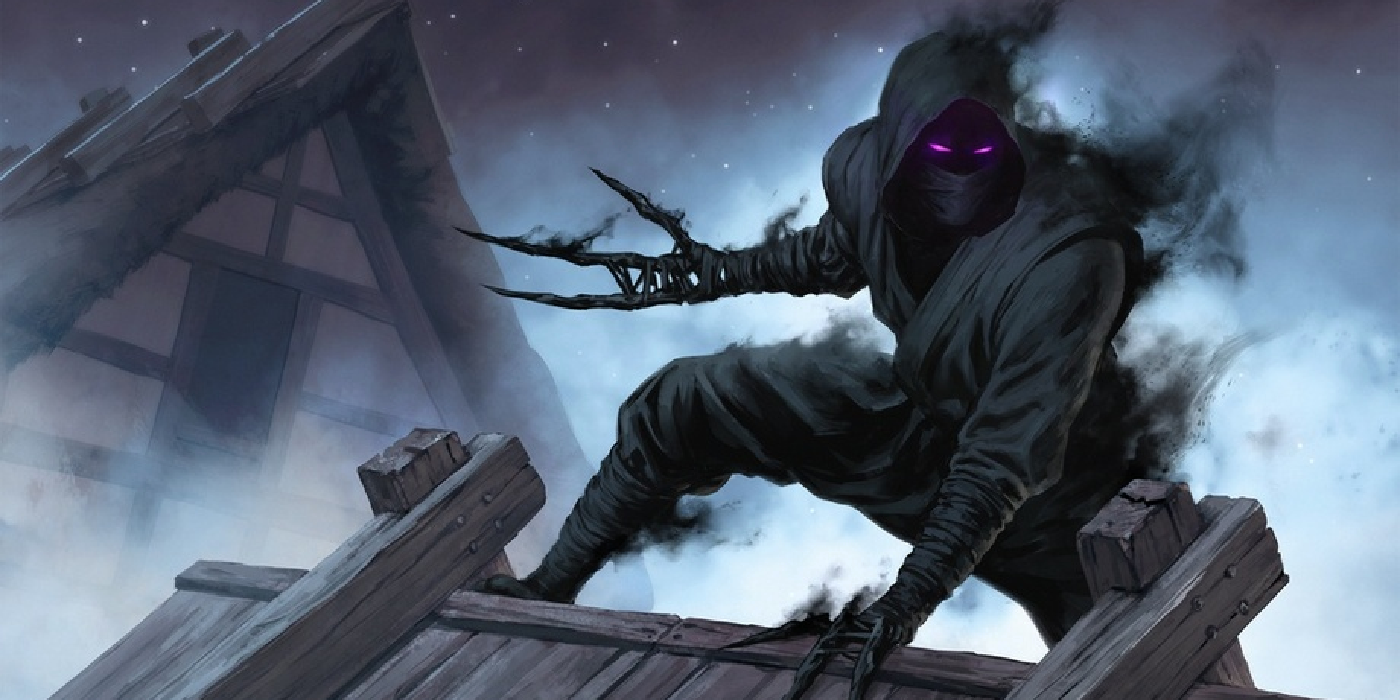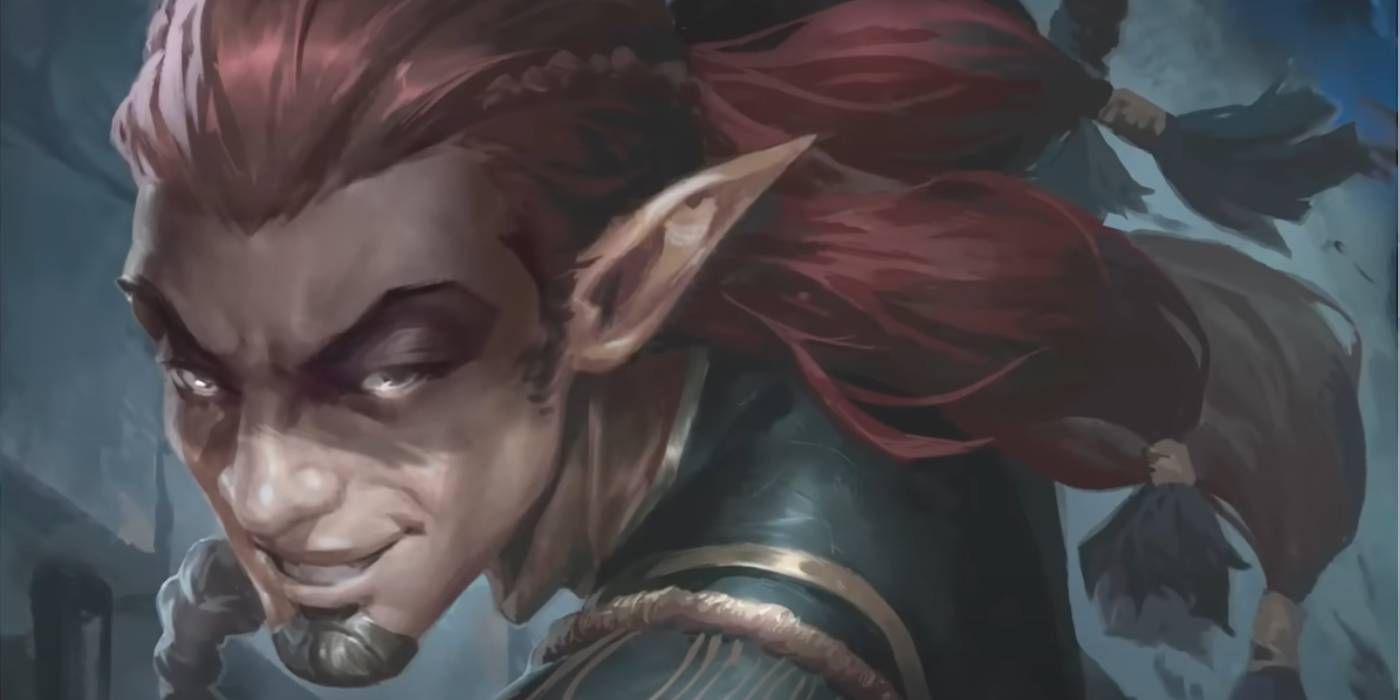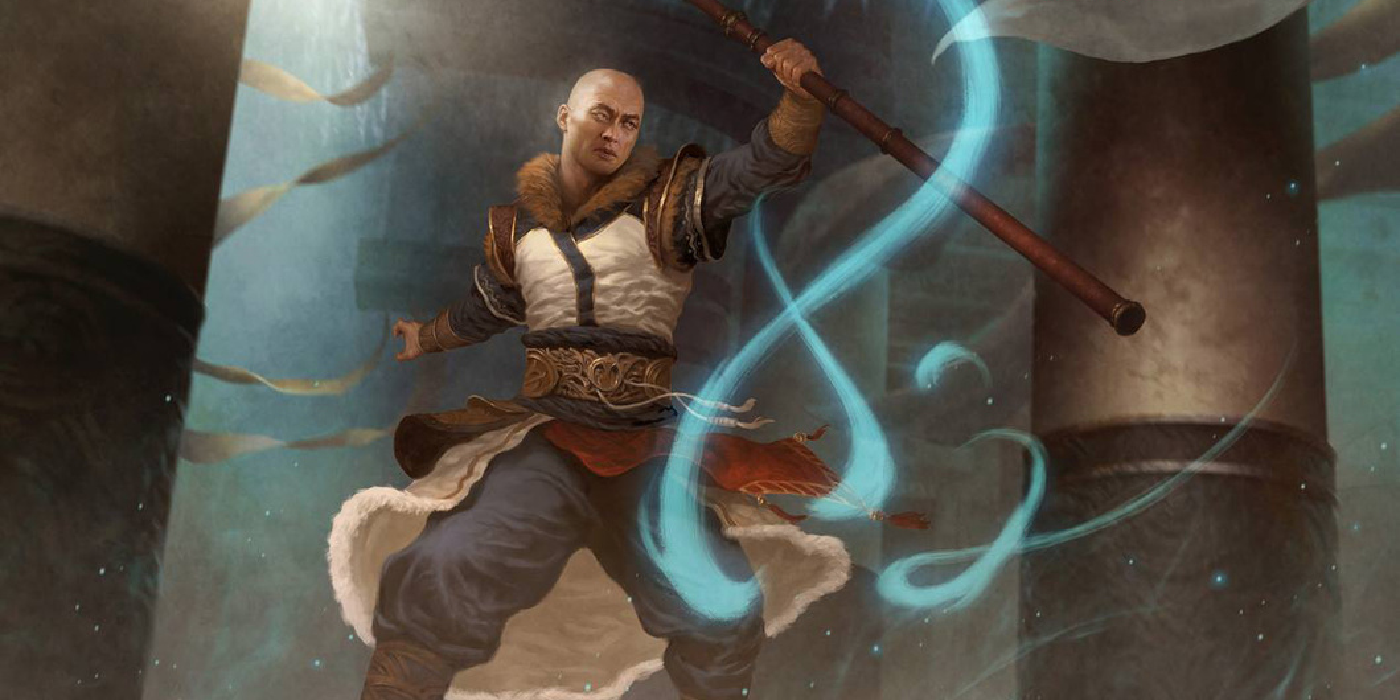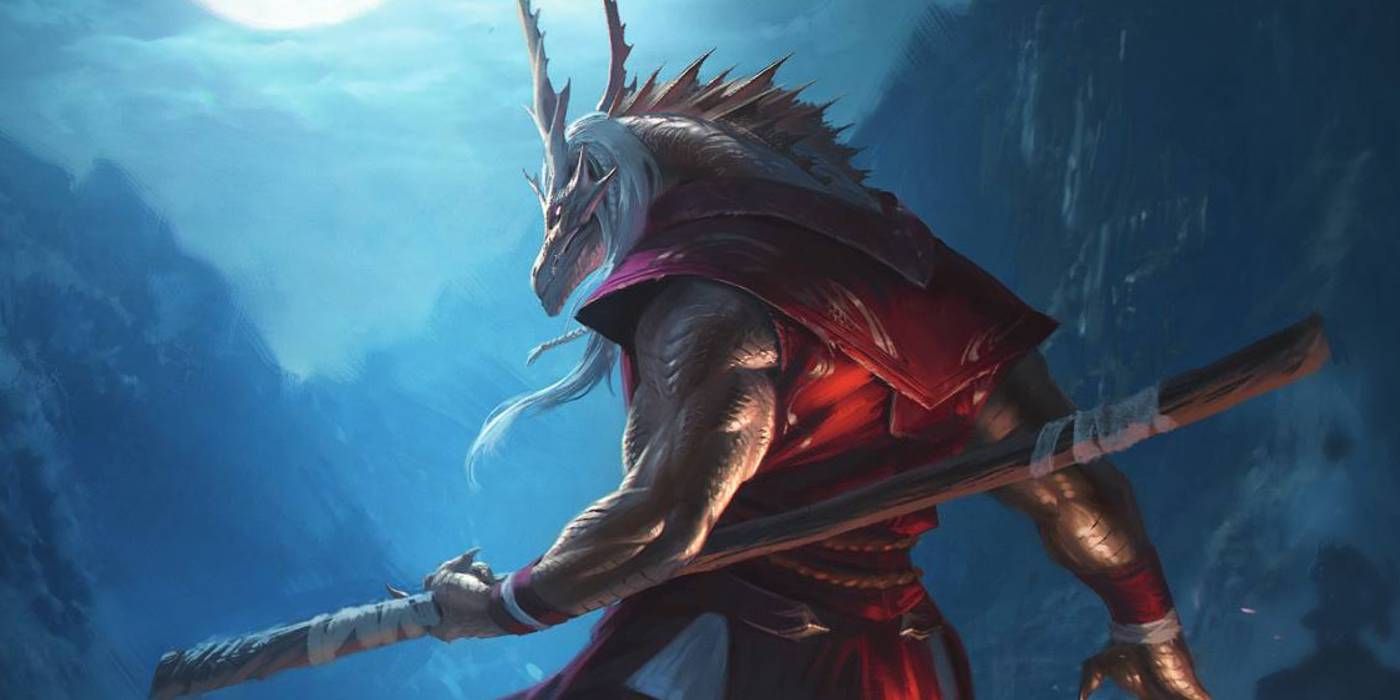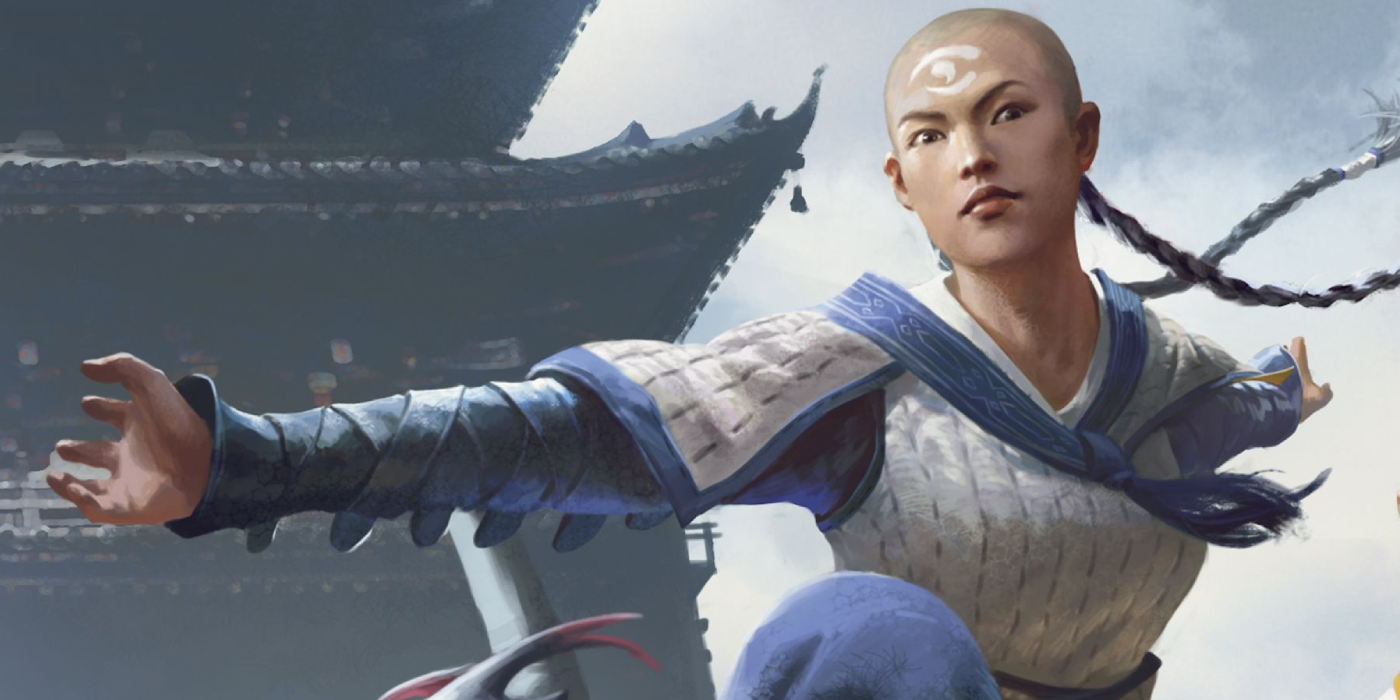D&D: All Monk Subclasses In 5e & 2024 PHB, Ranked From Least To Most Powerful
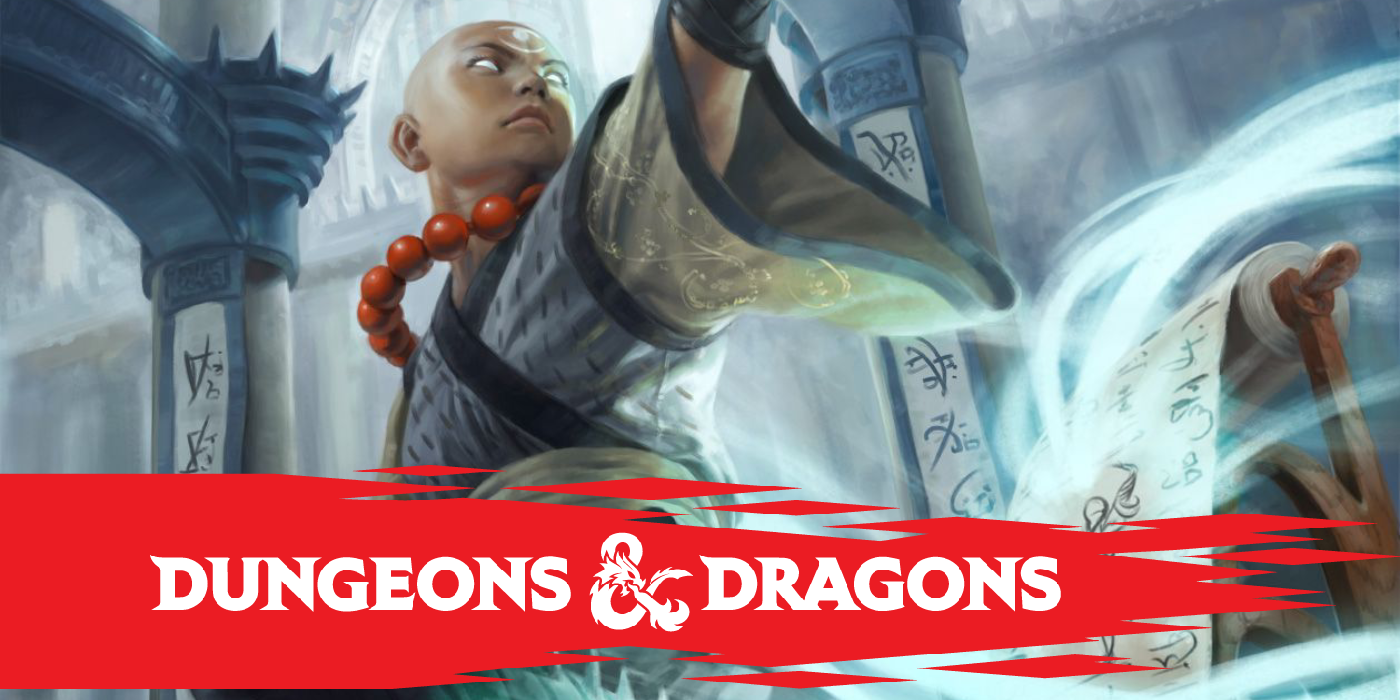
Summary
- Choosing the right monk subclass at level three is crucial to a character’s build.
- Some monk subclasses have limitations due to high ki costs.
- Each monk subclass offers unique features and abilities to enhance gameplay.
Choosing the right class is important for any Dungeons & Dragons character, but choosing the right subclass is especially important for a monk. Like most other DnD classes, monks choose subclasses at level three. There are 15 monk subclasses from 2014 5th edition and the updated 2024 rules, including those revealed in Unearthed Arcana, each of which can grant characters a wide variety of bonuses.
In contrast to the old spell slingers and sword swingers, the monk is unique. They fight with bare fists and Wuxia-like finesse, using Ki Points like spell slots to augment their attacks and increase their chances to strike. Like most DnD classes, monks come with a swathe of subclasses to pick from. Each one is valuable in its own way, usually providing the player with new features and abilities to spend their ki on. Still, some subclasses are better than others.
As of 2024, a
new Player’s Handbook has been released
featuring a rework to the entire Monk class. This rule book also
reworks four of the subclasses for the Monk
, slightly tweaking their abilities and replacing others altogether. Each still follows the 5e rule structure for ease of use.
15 Way Of Tranquility Is The Weakest Monk Subclass By Design
From Unearthed Arcana 24
Way of Tranquility is easily the least powerful monk subclass in DnD, but that’s kind of the whole point. Tranquility mostly gives players options for avoiding combat, not participating in it: from the moment they choose it, they can cast sanctuary to protect themselves at will, and use Healing Hands to restore their allies’ HP. Later, at sixth level, they get advantage on Charisma checks when they’re trying to cool tempers.

Related
10 Best Dungeons & Dragons One-Shots For People New To D&D
One-shots are a good way to give new players a taste of D&D without any long-term commitment. Here are some of the best to help get people started.
Way of Tranquility exists to provide an alternative way to play a monk character: as an agent of peace, not a combat whirlwind. It can actually be an interesting choice in more roleplay-heavy campaigns, but is basically useless in combat. That said, Tranquility monks can talk would-be enemies down, or even remove their violent impulses with a single touch beginning at level 11. It’s not the same as raw power, but it can help the party get out of some difficult situations.
14 Way Of The Four Elements Is Cool, But Underpowered
From The 2014 Player’s Handbook
Unfortunately, one of the coolest premises for a Monk is also one of the most mediocre subclasses in 5e. Way of the Four Elements effectively turns the player character into the Avatar, giving them access to Elemental Disciplines – spells they can cast by spending Ki Points. Despite the plethora of new features for monks to play with, the monk’s biggest problem turns its ugly head. The expensive chassis is the ki system.
All the class features that focus on “bending” cost absurd amounts of ki, which means most monks will run out of gas too quickly to capitalize on their features. The effects themselves are not bad per se, and can be used strategically to strike enemy weaknesses. But the fact that they’re tied to a very limited resource makes them underwhelming when compared to spells that use actual slots.
13 Way Of The Sun Soul Is Similarly Limited By Ki
From Xanathar’s Guide To Everything
Sun Soul is another example of a monk subclass with a cool concept that expands their offensive capabilities, but is limited by its use of ki. In addition, the effects themselves are too underpowered, close to the Arcane Archer subclass for the DnD fighter in terms of wasted potential. This subclass mostly gives a monk ways to deal radiant damage, beginning with the ranged option Radiant Sun Bolt at level three.
Searing Arc Strike is a solid offense akin to the burning hands spell, but again, the expensive ki costs mean it burns out rather quickly. Searing Sunburst is an inferior version of fireball, and Sun Shield basically turns the monk into a walking lamp that can deal a bit of radiant damage to anyone who hits them. This being the class’ final feature is severely disappointing. For that underwhelming capstone feature alone, many dislike the Sun Soul’s features.
A monk’s Ki Point pool always matches their monk level, beginning at level two.
12 Way Of The Ascendant Dragon Has Similar Ki Problems, But Is Slightly Better
From Fizban’s Treasury of Dragons
Not to harp too much on the “ki system is inherently flawed” talking point, but it’s a consistent failure in the game’s design. Ascendant Dragon suffers from the issues that Four Elements and Sun Soul suffer from: overpriced features and underwhelming high-level features. That being said, Ascendant Dragon does have a few benefits over the two.

Related
10 Best Ways To Run Dragons In D&D
Dragons have a special place within D&D, but see little use in official modules. These tips can help new DMs with including them in their games.
Draconic Disciple offers ways to disable opponents with the fright debuff, or work around vulnerabilities and resistances through Draconic Strike. Breath of the Dragon is a powerful AoE attack that is tied to Martial Arts dice. The Aspect of the Wyrm, an aura that can frighten enemies and grant the monk resistance to certain types of damage, really makes the player feel like a powerful dragonborn. Unfortunately, they are still limited to the small ki pool, so not a great subclass for Marvel’s Iron Fist builders out there.
11 Way Of The Long Death Lets Monks Defy Damage
From Sword Coast Adventurer’s Guide
The Long Death monk is a death-defying subclass with some useful abilities, but a few of those are only applicable in specific situations. Touch of Death lets Long Death monks siphon hit points from fallen enemies. Hour of Reaping allows for an attempt to frighten a creature against their Wisdom saving throw. But their bread and butter, Mastery of Death, is their most impressive feature by far.
This feature allows the Long Death monk to live up to their name by allowing them to spend a Ki Point to avoid being knocked out, with no action required. This means Long Death Monks will stay alive as long as they are gassed, which is easy since they have few class features that use ki. The only option they have for ki expenditure is their 17th-level feature, Touch of the Long Death, which allows them to turn Ki Points into necrotic damage.
10 Way Of Mercy Is A Healing-Focused Monk Subclass
From Tasha’s Cauldron Of Everything
Way of Mercy is one of the most flavorful and mechanically versatile subclasses available to a monk. They are masters of life and death, providing support to allies in battle whilst simultaneously dealing damage to those beyond their help. Their proficiencies in Medicine and Insight give them some great utility outside of just combat.
Hands of Healing turns the Flurry of Blows into a Flurry of Healing, restoring hit points equal to the damage it would have dealt. It’s also free starting at 11th level. In contrast, Hands of Harm does extra necrotic damage on an unarmed strike. Physician’s Touch allows for the curing of physical debuffs during a Flurry, then poisoning foes with the next use of Hands of Harm. Hand of Ultimate Mercy resurrects any creature that died within 24 hours, provided a corpse is present. It’s not the most powerful monk subclass by raw damage output, but the healing it provides can be very helpful.
9 Warrior Of Mercy Increases Your Healing Or Harming Potential
From The 2024 Player’s Handbook
The Monk has seen substantial changes in the 2024 Player’s Handbook, such as increased damage from their Martial Arts die from 1d4 to 1d6 at Level 1. Furthermore, ki points are a thing of the past, replaced with Focus Points that are more abundant thanks to the Uncanny Metabolism feature at Level 2, recovering all expended points when you roll Initiative once per Long Rest.
Picking the Warrior of Mercy path at Level 3 is similar to the former Way of Mercy, but with some significant changes. For starters, your Flurry of Healing or Harm can be used a number of times per Long Rest equal to your Wisdom modifier. With new changes giving you three Flurry of Blows uses at Level 10, you can heal or harm targets more often than before.
This subclass still acts very closely to the Way of Mercy, so you can still apply necrotic damage, heal status conditions, or inflict debuffs on enemies just like you could before. However, this subclass thrives from how the base Monk has been changed, especially in regard to the new Focus Points system. With more ways to recover Focus Points, you have more ways to activate the Warrior of Mercy’s strong abilities.
8 Way Of The Astral Self Gives Monks An Extra Hand
From Tasha’s Cauldron Of Everything
The archetypal Astral Self monk is based on common imagery in Hindu and Buddhist art that depicts gods or manifestations of Buddha with multiple sets of arms. Arms of the Astral Self summons two extra arms for the player that use Wisdom in place of Strength when making Strength-related checks. Wisdom can also replace attack modifiers and damage rolls in combat.
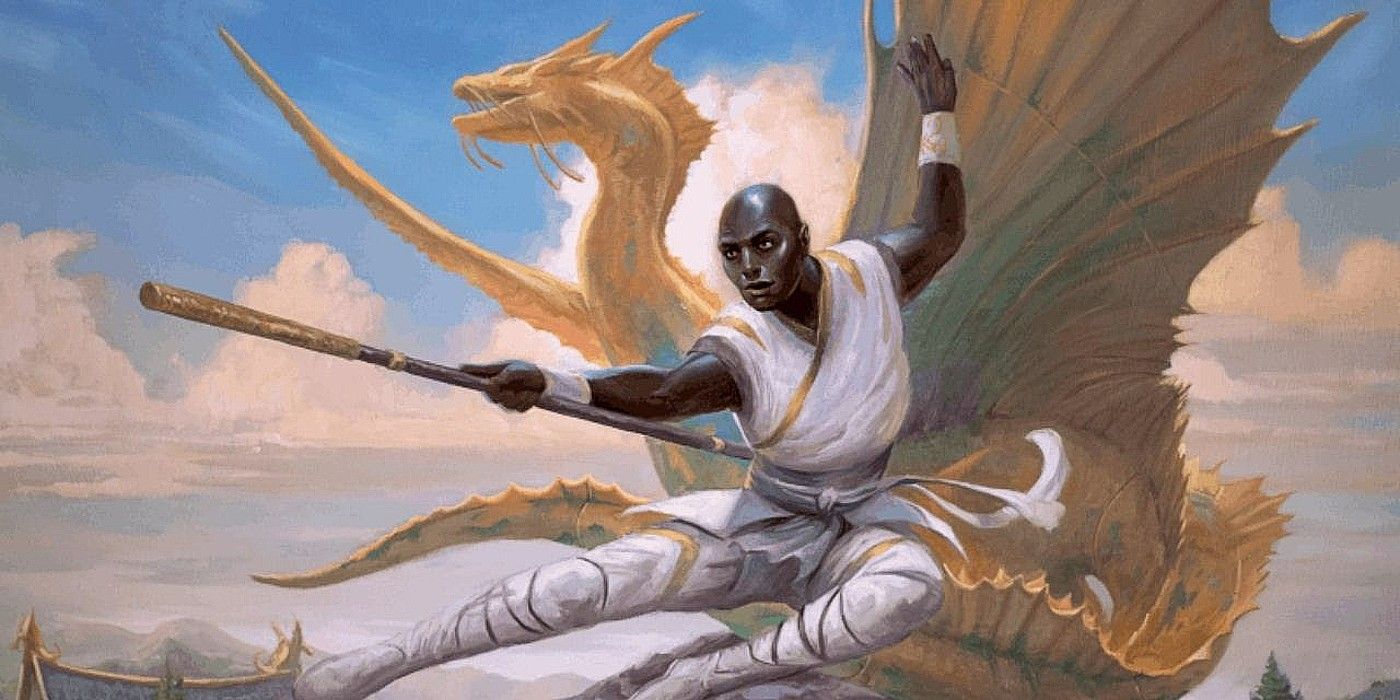
Related
D&D: Powerful & Essential Items Every Monk Needs
Monks in Dungeons & Dragons are agile combatants who are masters of ki and martial arts, and a few items do a better job than most to support them.
These arms also extend the range of unarmed strikes by 5 feet, and change the damage type to force. Astral Self monks can also summon an Astral Visage, giving them empowered darkvision and advantage on Wisdom and Charisma checks. At 11th level, players can also use their astral bodies to deal extra damage, or deflect elemental spells. With the arms coming at an affordable 1 ki point, Astral Self is a reliable monk subclass, if not a terribly specialized one.
7 Warrior Of The Elements Lets You Finally Become The Avatar
From The 2024 Player’s Handbook
The Warrior of the Elements is another 2024 Player’s Handbook subclass for the Monk that directly buffs the Way of the Four Elements original subclass for the archetype. The first and biggest change comes when you pick the subclass at Level 3 and gain the Elemental Attunement feature. For one Focus Point, this ability gives your Unarmed Strikes a 10ft range, and allows you to change their damage type to one of these elements:
- Acid
- Cold
- Lightning
- Fire
- Thunder
Elemental Attunement lasts for 10 minutes, or until you are incapacitated, so you can use the benefits from this feature for a long time!
However, when you hit an enemy while Elemental Attunement is active, you can also force that target to make a Strength saving throw. On a failed save, you can move that enemy 10ft toward or away from you, giving you a way to manipulate battlefields to your favor. This could let your monk knock enemies off ledges, into dangerous terrain, or even into the air to fall back down for extra damage.
At Level 6 in this subclass, you gain Environmental Burst, which is essentially a fireball that inflicts damage equal to three rolls of your Martial Arts die. This AoE is fantastic at lower levels, especially when you can choose the damage to be Acid, Cold, Fire, or Lightning to bypass resistances. At later levels, you gain extra mobility and elemental resistance that can change every turn, making these monks explosive damage dealers that can alter enemy positions for their team.
6 Way Of The Drunken Master Is A Chaotic Crowd Control Subclass
From Xanathar’s Guide To Everything
Drunken Master is a fantastic subclass, though slightly too specialized in crowd control. Its first ability, Drunken Technique, allows for the monk to take the benefits of Disengage after using Flurry of Blows. The sheer power of this cannot be understated: Drunken Master monks can strike enemies several times in quick succession, then run out of their range, avoiding any and all opportunity attacks while increasing their speed. Tipsy Sway allows for quick recovery from being knocked prone, and more importantly, redirects melee attacks.
Drunkard’s Luck cancels out any disadvantage, and Intoxicated Frenzy amps up Flurry of Blows to absurd degrees. It’s a very powerful style when used properly, but does tend to struggle against singular, tough foes at higher levels. That said, Drunken Master’s ki expenditure feels more impactful than other subclasses, making it an excellent choice for experienced players.
5 Way Of Shadow Is A Stealthy Monk Subclass
From The 2014 Player’s Handbook
Ninjas are one of the most iconic professions for fantasy martial artists, so it would be remiss of 5e to not have a subclass for them. Way of the Shadow is the archetypal ninja build, and the ki spending is actually quite useful, if a little overpriced. Access to spells such as darkness, darkvision, pass without trace and silence is incredible for a stealth martial build. Unfortunately, each of these costs 2 Ki Points, making them hard to budget for at low levels.
Shadow Step allows for a free improved Misty Step while in dim light or darkness, plus an advantage on the first melee attack. Cloak of Shadows allows for invisibility as an action while in the same light conditions previously met. Ki points are only spent on Shadow Arts, and the rest of the features are used for free. That does elevate the subclass, making Shadow monks play more like rogues with levels in a spellcasting class.
4 Warrior Of Shadow Deepens The Darkness With New Buffs
From The 2024 Player’s Handbook
The 2024 Player’s Handbook brings back the Way of Shadow monk as the Warrior of Shadows, but with several alterations to how it plays. At Level 3, instead of getting pass without trace, darkvision, and silence, you only get the darkness and minor illusion spells to use. However, both of these spells only require a single Focus Point to cast, rather than the expensive two ki points from before.
Furthermore, when you cast darkness, you can control it at the start of each of your turns in combat, moving it up to 60ft for no action or bonus action cost. This gives you a way to constantly put your enemies into darkness, which you can see through with dark vision gained at 3rd Level. Darkness is consistently good in combat, blinding enemies and preventing some spells from targeting your monk while they stand within it.
Be careful not to blind your allies with
darkness
, as any blinded creature has disadvantage on attack rolls. Spellcasters on your team may not be able to see targets in darkness either, preventing some useful spells from being cast.
Shadow Step from the original subclass returns, with an Improved version of it at Level 6 giving you a way to teleport in any type of lighting for a Focus Point cost. This also gives you a free Unarmed Strikeas part of the same bonus action, giving you tons of freedom to move around in battle. With invisibility, incorporeal movement, and Flurry of Blows without Focus Points at late levels, this subclass stays hidden and reliably moves to good positions while debuffing enemies with darkness.
3 Way Of The Kensei Focuses On Speed & Relentless Training
From Xanathar’s Guide To Everything
For those that want nothing more than to be a whirlwind of fists and steel, Kensei Monk is the perfect subclass. The features provided by Path of the Kensei allow for a monk to receive special bonuses to their preferred weapons. Agile Parry boosts AC while performing unarmed strikes in battle (which, for a monk, is pretty much all the time) and Kensei’s Shot, which boosts ranged damage. Monks can choose additional Kensei weapons at sixth, 11th, and 17th levels – every time they take a subclass feature.

Related
D&D: Unique Dual-Wield Builds You (Probably) Haven’t Thought Of
Fighting with two weapons in Dungeons & Dragons is a fun mechanic with a wealth of options, and players can benefit from trying some unusual ideas.
One with the Blade and Sharpen the Blade basically provide options for overcoming resistances and dealing more damage. Unerring Accuracy allows Monks to reroll misses once per turn, absolutely free. While Kensei isn’t making waves flavorwise, it’s light on the Ki Point requirements, and there’s no denying its simple effectiveness from a combat standpoint.
2 Warrior Of The Open Hand Slighty Nerfs A Familiar Powerhouse
From The 2024 Player’s Handbook
Many features from the Way of the Open Hand return in the 2024 Player’s Handbook through the Warrior of the Open Hand. This titular, classic monk subclass retains many of the same abilities, such as the Addle, Push, and Topple abilities at Level 3. However, with new Monk changes, the abundance of Focus Points makes these techniques more desireable, rather than just spending points on something else.
The Level 6 Wholeness of Body feature has seen some changes, mostly by being changed into a bonus action rather than a full action. Now, you can regain Hit Points equal to a roll of your Martial Arts die, with the addition of your Wisdom modifier. You can use this feature mulitple times equal to your Wisdom modifier as well, with all uses recovering after a Long Rest.
However, Level 11 is where you can see some slight nerfs to this powerful subclass. You no longer gain Tranquility at Level 11, which normally gave you the benefits of the sanctuary spell. This feature is replaced by Fleet Step, a feature that allows you to do Step of the Wind whenever you use a bonus action to do anything other than Step of the Wind.
Fleet Step is a fine substitute for previous features, but the biggest change here comes from the balancing of Quivering Palm at Level 17. This ability was busted, giving you a way to kill any target instantly if it failed a Constitution saving throw for only three ki points. In the 2024 rules, this ability costs 4 Focus Points to use, dealing 10d12 force damage to creatures that fail the save instead.
Although Quivering Palm can still be applied using an action on each of your turns as long as a creature keeps failing its Con saves, it still is a big nerf to the ability. The Warrior of the Open Hand reamins an incredibly strong subclass, but with reasonable nerfs that make it more versatile.
1 Way Of The Open Hand Is The Strongest Monk Subclass
From The 2014 Player’s Handbook
Without a doubt the most classic and reliable subclass, Way of the Open Hand is pretty much the first thing people imagine when they think of a fantasy monk. Open Hand Technique enhances Flurry of Blows with ways to knock back, knock down or prevent enemy reactions. Wholeness of Body provides quick healing when needed. Tranquility grants the Sanctuary buff until the start of the next long rest or ends early as it usually would.
Then, the lynchpin of the entire subclass, Quivering Palm, is gained at level 17. With a measly 3 Ki Points, any creature hit by an unarmed strike must succeed a Constitution saving throw. If they fail, they are reduced to 0 hit points immediately. If they succeed, they still take 10d10 necrotic damage. It takes a while to get to this level, but Open Hand Technique provides a wide enough range of benefits to carry players through the lower levels.
But there’s truly no such thing as a bad monk subclass. With the right combination of stats and feats, and a decent party to back them up, any monk can excel in Dungeons & Dragons.
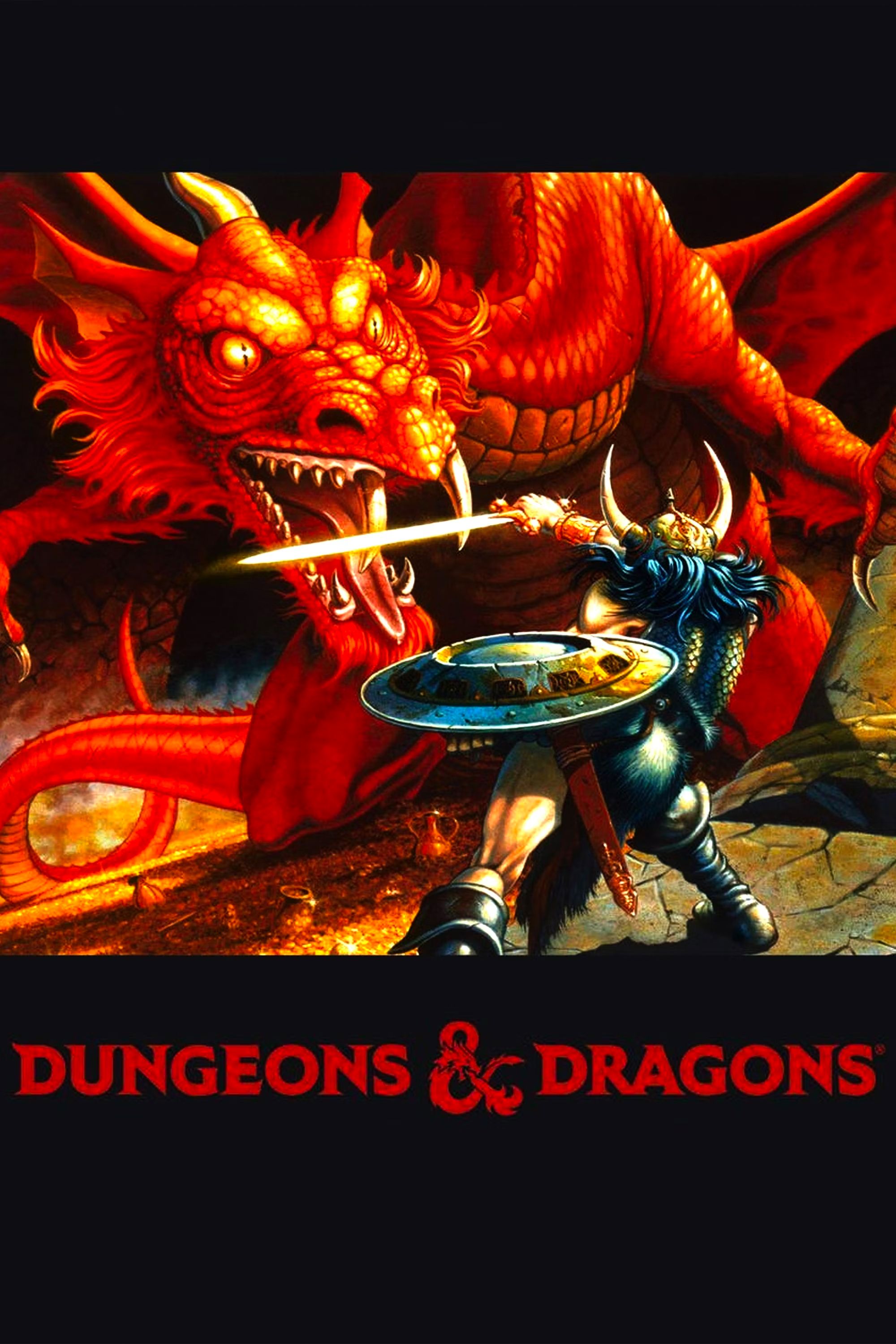
Dungeons and Dragons
Dungeons and Dragons is a popular tabletop game originally invented in 1974 by Ernest Gary Gygax and David Arneson. The fantasy role-playing game brings together players for a campaign with various components, including abilities, races, character classes, monsters, and treasures. The game has drastically expanded since the ’70s, with numerous updated box sets and expansions.
- Original Release Date
- 1974-00-00
- Publisher
- TSR Inc. , Wizards of the Coast
- Designer
- E. Gary Gygax , Dave Arneson
- Player Count
- 2-7 Players
World News || Latest News || U.S. News
Source link


